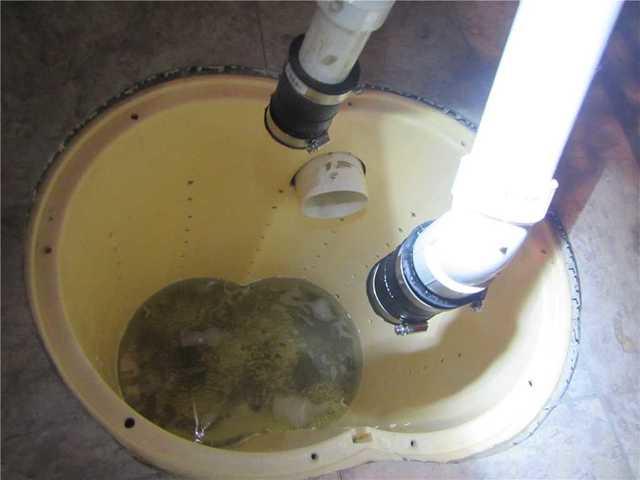Helpful Tips for Cleaning a Sump Pump
Helpful Tips for Cleaning a Sump Pump
Blog Article
Everybody may have their own individual notions involving How To Effectively Clean A Sump Pump.

Sump pumps are essential elements in several homes, particularly in locations prone to flooding or too much dampness. They aid avoid water damages by efficiently eliminating excess water from basements or crawl spaces. Nonetheless, like any other appliance, sump pumps call for regular upkeep to guarantee they operate successfully when needed one of the most. Cleansing your sump pump is an important part of its maintenance, and recognizing exactly how to do it correctly can save you from costly fixings and prospective calamities.
Intro
Keeping a clean sump pump is important for its correct functioning and durability. Neglecting this necessary job can cause obstructions, breakdowns, and eventually, water damage to your property. Therefore, finding out exactly how to cleanse a sump pump is critical for homeowners who rely upon these devices to maintain their basements completely dry and secured.
Understanding the Sump Pump
Prior to diving right into the cleansing procedure, it's important to have a standard understanding of how a sump pump functions. Typically set up in a pit or container listed below the basement flooring, a sump pump consists of numerous crucial elements, consisting of a pump, a float button, and a discharge pipeline. When water builds up in the pit, the float button turns on the pump, which after that pumps the water out via the discharge pipeline, far from the structure's structure.
Indications of a Dirty Sump Pump
Knowing when your sump pump requires cleaning is crucial for avoiding potential breakdowns. Some common signs that suggest a filthy sump pump include strange sounds during procedure, lowered water flow, and noticeable particles in the pit. If you discover any one of these signs, it's vital to clean your sump pump promptly to prevent any more issues.
Planning for Cleaning
Before you begin cleaning your sump pump, it's important to take some safety and security precautions. Begin by shutting off the power to the pump to stay clear of any kind of electric mishaps. Furthermore, put on ideal safety equipment, such as handwear covers and goggles, to safeguard yourself from dirt, debris, and prospective virus.
Detailed Overview to Cleansing a Sump Pump
Shutting down the Power
Begin by separating the power supply to the sump pump to prevent any accidents while cleansing.
Getting Rid Of Particles and Dust
Utilize a container or a scoop to remove any noticeable particles, dust, or debris from the sump pit. Dispose of the particles correctly to prevent it from blocking the pump or the discharge pipe.
Cleaning the Pump and Drift Switch
As soon as the pit is clear of particles, thoroughly get rid of the pump from the pit. Examine the pump and the float button for any kind of indicators of damage or wear. Make use of a soft brush or towel to clean up the surface areas and remove any type of collected crud.
Purging the System
After cleaning up the pump and float switch, flush the sump pit with tidy water to remove any kind of staying dirt or sediment. This will help ensure that the pump runs efficiently and successfully.
Checking for Appropriate Functioning
Before reinstalling the pump, execute a fast test to guarantee that the float switch triggers the pump properly. Put some water right into the sump pit and observe the pump's procedure. If every little thing is operating appropriately, you can rebuild the pump and reconnect the power supply.
Maintenance Tips to Keep Your Sump Pump Clean
Along with periodic cleansing, there are a number of upkeep ideas you can follow to keep your sump pump in optimal problem:
Final thought
Cleansing your sump pump is a crucial element of its maintenance and makes sure that it runs efficiently when you require it one of the most. By following the steps described in this guide and integrating normal maintenance right into your routine, you can prolong the life-span of your sump pump and protect your home from water damages.
6 STEPS ON HOW TO CLEAN A SUMP PUMP PROPERLY
UNDERSTANDING SUMP PUMPS
Your sump pump plays a crucial role in protecting your home by managing and removing excess water. It primarily functions as a “shield”, guarding your basement against the damaging effects of water accumulation. The pump is housed in a sump pit in the lowest part of your basement, and its job is to pump out any water that collects there.
During heavy rainfalls or when snow melts rapidly, water can infiltrate your basement, posing potential risks like flooding, structural damage, and harmful mold growth. Here, the sump pump springs into action, pumping out the intruding water and directing it away from your home.
SAFETY FIRST
Before cleaning, remember to prioritize safety. Disconnect the sump pump from the power source to prevent any accidental electric shocks. Also, wear sturdy gloves to protect your hands from any sharp or dirty components within the pump.
REMOVE THE SUMP PUMP
After ensuring your safety, the next step is to remove the sump pump from its pit. Doing this might require careful maneuvering as you don’t want to damage any pump components. Once removed, clean the sump pit to remove any accumulated debris or sludge.
INSPECT THE PUMP
Inspect the pump for any visible signs of wear or damage. Check the power cord, float switch, and impeller housing. If any components look worn out or damaged, consider replacing them to ensure optimal performance.
CLEAN THE PUMP
Thoroughly clean the pump with warm, soapy water. Make sure to rid it of any dirt, gravel, or other debris that might impede its performance. You can use a toothbrush to clean the small, hard-to-reach parts of the pump.
REINSTALL THE SUMP PUMP
Reinstall the pump into the sump pit Make sure it’s positioned correctly to remove the water effectively Once it’s back in place, reconnect it to the power source TEST THE PUMP
Finally, pour some water into the pit to ensure the pump works correctly. It should start automatically and begin pumping out the water; if it doesn’t, check the power source and the positioning of the pump.
Remember, while cleaning your sump pump is an essential part of home maintenance, hiring a professional plumber for a thorough inspection and cleaning at least once a year is also important. This will ensure that your pump is in optimal condition, ready to protect your home from potential water damage.
BEST PRACTICES FOR CLEANING SUMP PUMP DISCHARGE PIPES
Regular Inspection: Regularly inspect your discharge pipes, especially during heavy rainfall or snowmelt periods. Look for any signs of blockage or damage. Early detection of problems can prevent serious issues down the line. Periodic Cleaning: Over time, sediment and debris can accumulate in the discharge pipes, impeding the flow of water. Regular cleaning helps keep the pipes clear and functioning efficiently. You can use a high-pressure water jet to effectively clean the pipes. Insulation During Winter: In colder climates, discharge pipes can freeze, blocking the outflow of water. Protect your discharge pipes from freezing temperatures by insulating them with foam pipe insulation. This will ensure the sump pump can continue to discharge water even in freezing conditions. Proper Positioning: The discharge pipe should be positioned to direct water away from your home’s foundation. Improper positioning can lead to water seeping back into the basement. Ensure the pipe is long enough and angled correctly. Installation of a Check Valve: A check valve prevents water from flowing back into your sump pit after the pump has pushed it out. Installing a check valve helps maintain the efficiency of your sump pump and reduces the risk of flooding. Minimize Pipe Turns: Every curve or turn in the discharge pipe can decrease the efficiency of water flow. By minimizing turns and bends in your discharge pipe, you can increase the efficiency of your sump pump. https://www.fullspeedplumbing.com/how-to-clean-a-sump-pump-properly9999/

I am very intrigued by Cleaning & Maintenance Tips for Your Home's Sump Pump and I really hope you enjoyed my article. Be sure to set aside a second to share this blog if you enjoyed it. We cherish your readership.
Call Today Report this page